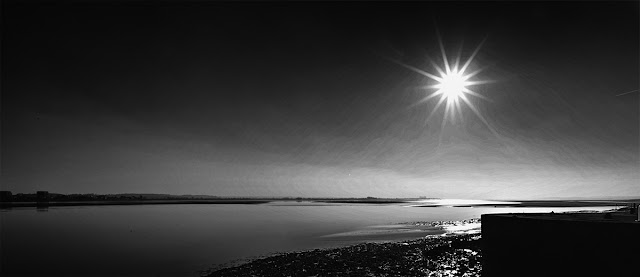The purpose of this exercise is to find different pictures within photographs through cropping
Image 1
This is the starting image with the wrecked train carriages on the upper horizontal third and the train tracks leader the eye through the image.
Image 1a
Cropping the bottom 2 thirds of the image make the train carriages the prime subject in the photograph and there is still enough of the train tracks that have a curve almost now in parallel to the carriages. The image has less depth now but the viewer is still taken through the image from right to left following the line of the carriages.
Image 2
Image 2a
In this image the grass foreground has been almost completely cropped from the bottom of the image and so has the sun which was borderline over exposed. With the sky now accounting for almost 75% of the image the eye is now overwhelmed with the beautiful colours of the sky at sunset with cloud structure adding almost texture to the sky in contrast to the glassy effect of the water.
Image 3
In this image the harbour wall has been included and without a person standing on the wall in silhouette the wall could now instead be a distraction to the overall image.
Image 3a
Here the bottom third of the image has been cropped out and there is just enough of the main element in the image to help anchor it. In this image now the sun and its rays is much more clearly the prime subject in the image.
Exercise Learning's
a) Cropping of a picture can enable elements of the image become stronger or easily the main element within the image
b) When composing the image in your pre-visualisation you may already have decided that there are elements in the image within the viewfinder that aren't required in the final image so that cropping is already planned in before the post processing has started so that in the same way as part of this exercise we are seeing a picture within the photograph, when taking the image with the camera we may also be seeing the picture we want within the boundaries of the viewfinder
c) Cropping out elements of a photograph may create a scene that is totally different from what was seen as a whole when the shutter release button was pressed. This could create a false view for those present at the scene at the time, but for those viewing the cropped image at a later date we could instead trust the image in front of our eyes as a true image. Reportage photography in some tabloids / magazines may perhaps take advantage of this post processing element






No comments:
Post a Comment